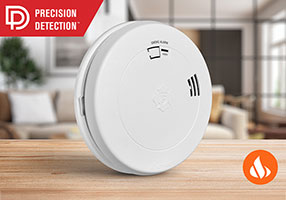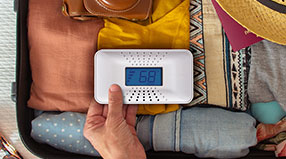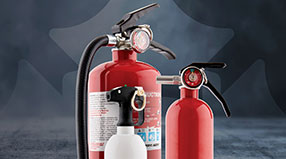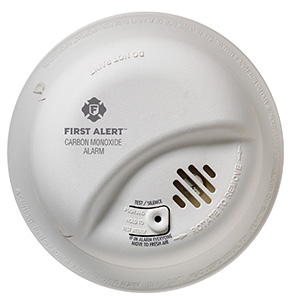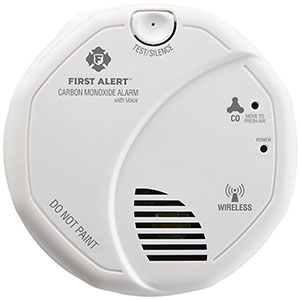First Alert Wireless Interconnect Talking Battery Operated Smoke & Carbon Monoxide Alarm - 2pk
First Alert Wireless Interconnect Talking Battery Operated Smoke & CO Alarm
First Alert's series of Wireless Interconnect Talking Battery Operated Smoke & CO Alarms effectively eliminate the need for a wired connection and operate entirely on batteries. The latest advancement in a series celebrated for its intuitive use of technology, the First Alert Wireless Interconnect collection offers an abundance of options when it comes to creating the ideal safety network. Wireless inter-connectivity allows you to connect up to 16 First Alert Wireless Interconnect alarms within your home! Voice can easily be programmed for the alarm's location within your home. (this feature comes with 11 pre-programmed choices) Voice also notifies which hazard is being detected. If the alarm set in your kitchen senses smoke, all of your First Alert Wireless Interconnect alarms will announce: 'Warning, evacuate! Smoke in the Kitchen!' This feature allows for the maximum in whole home protection.
First Alert Wireless Interconnect Talking Battery Operated Smoke & CO Alarms utilize an Electrochemical Sensor that allows for optimal efficiency in detecting carbon monoxide. The realization of Photoelectric Smoke Sensing Technology will effectively reduce the number of nuisance alarms triggered by cooking smoke and shower steam. This alarm comes equipped with a Mute Button that serves the dual purpose of quickly silencing your alarm as well as testing its function. The combination of an End of Life Timer and an increased emphasis on the unit's 85db sound output establish peace of mind, while the inclusion of Dual Smoke and Carbon Monoxide Sensing all but guarantee the safest of experiences. This alarm carries a 5 year limited warranty and complies with UL217 and UL2034 Standards.
This Wireless Interconnect alarm is for you if:
- You want to build a safety network of interconnected alarms in your home without the cost and hassle of wiring.
- You want the earliest notification of where the danger is in your home.
Where To Place Carbon Monoxide Alarms: One on every level of the home and one in each sleeping area.
This product is intended for non-professional do it yourself installation. If you would like information about a professionally installed and monitored system, please contact First Alert Professional at 1-800-921-6025. First Alert Professional is not affiliated with BRK Brands, Inc.
Other reasons include: It could be a different device or appliance such as a security system, monitor, carbon monoxide alarm, or other device which has a similar low battery or alert signal. Some of the same factors that cause unwanted alarms can cause intermittent alarms: dust and insects in the alarm or power interruptions in hardwired alarms. Improper wiring on AC or AC/DC smoke alarms. AC alarms will chirp every 5 seconds if the interconnect wire is grounded. The orange interconnect wire should NEVER be grounded; it should only be used to interconnect other smoke alarms or compatible devices.
- You may not be holding the test button down long enough. Try holding it down for up to 10 seconds (20 seconds on photoelectric models) .
- Your battery may not be installed properly or snapped all the way in place. Even if the alarm sounded briefly when the battery touched the terminals, you still need to make sure it is snapped securely in place. If the battery is loose, in cannot power the smoke alarm properly. After installing new batteries, be sure to test your smoke detector.
- Your AC power may not be on. AC and AC/DC units will have a power indicator light (red or green) that shines continuously when they are receiving electrical power.
- If you have a 10-Year model, the smoke alarm may not have been properly activated. If the tab broke away before the alarm was activated, you can use a toothpick to move the switch over to test the alarm.
- There may be insufficient battery power, try new batteries.
- Problems with voltage or insufficient electrical power (brown out) may cause a continuous weak sounding alarm. For AC or AC/DC models, temporarily disconnect power at the service panel until the brown out is over. If you do not restore the AC power, your smoke alarms cannot warn you of a fire.
- Incompatible warning device. If an incompatible alarm or auxiliary device is linked into a series of AC or AC/DC smoke alarms it may cause the system inadvertently go off.
- It is possible that your smoke alarm "silence" button was pushed by mistake. The alarm will now "chirp" once a minute for up to 15 minutes before resetting.
- Are you sure it's the smoke alarm? Funny to ask, but other devices have similar low battery chirps or warning tones.
- Your "new" batteries may not be fresh. If batteries are stored, especially in cold areas like refrigerators, they lose their charge more quickly. Always check the freshness date on the package when buying new batteries. Keep plenty of replacement batteries on hand so that you are sure to always be protected by your smoke alarms.
If it's time to replace your alarms, consider the NEW 10-Year Life series and never have to worry about a battery replacement for the life of the alarm.10-Year alarms are available in smoke, carbon monoxide and combination alarms.
Here are a few situations that may cause a carbon monoxide alarm "false alarm:"
- The carbon monoxide alarm needs to be relocated. Carbon monoxide alarms should be located 15-20 feet away from all fossil fuel burning sources like furnaces and stoves. Alarms should be located 10 feet away from sources of humidity like showers.
- Fossil fuel burning appliances may not be burning fuel completely. Check pilot lights/flames for blue color. Appearance of yellow or orange flames indicates incomplete combustion-a source of carbon monoxide.
First Alert Wireless Interconnect Talking Battery Operated Smoke & CO Alarm Features:
● Wireless inter-connectivity, connect up to 16 First Alert Wireless Interconnect alarms in your home and when one sounds, they all sound for increased whole-home protection.
● Talking alarm, actual voice speaks the type and location of danger in your home, when easily programmed.
● Dual smoke & co sensing, ultimate protection from two deadly dangers.
● Photoelectric smoke sensing, optimal protection from smoldering fires. plus, reduces false alarms like those caused by cooking fires and shower steam.
● Eco-friendly, completely recyclable as an electronic device.
● Mute button, mutes unnecessary alarms immediately. also tests alarm function with same button.
● EZ access battery drawer, no need to remove alarm from ceiling to change battery.
● Low battery signal mute, quiets low battery signal for up to 8 hours.
● Electrochemical sensor, most accurate technology available for detecting carbon monoxide* *compared to other common sensing technologies.
● End of life timer, alarm chirps when it is time to replace it.
● 2 AA batteries included.
● Loud 85db alarm.
● 5-year limited warranty, carbon monoxide alarms should be replaced every 5 years for maximum protection.
● Meets UL217 & UL2034 standards
● FCC compliant
If you are interested in ordering a large quantity of items you may qualify for volume pricing discounts. Volume Discount Pricing is a great way for customers to save big on large, bulk orders of most items available in our store. Please send a bulk order request to our friendly sales staff so they may create a quote and provide personal service for your order! You will receive a response within 1-2 business days and our office hours are Monday through Friday, 8am-5pm CST.
- Let us know what products & the quantities you are interested in.
- Get a detailed quote from a dedicated sales rep.
- Our warehouse ships directly to you.
- You enjoy the savings & are now a preferred customer.
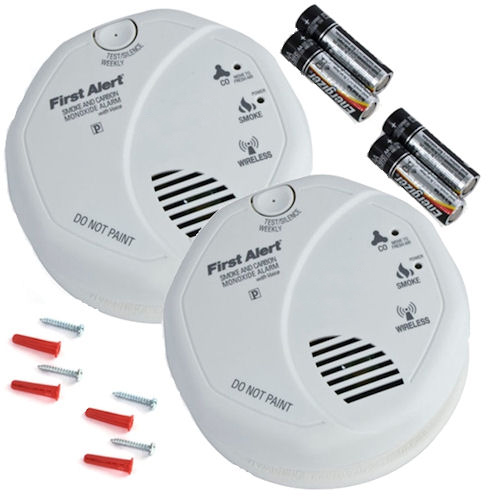
First Alert WirelessTalking Battery Operated Smoke & Carbon Monoxide Alarm - 2pk Reviews
Did exactly like DVD instructed, put one in basement and another in upstairs hallway. Could not ask for anything better. Family sleeps well at night.
LOVE the way they can communicate between themselves
Purchased 3 sets six units to place through out the house. Sleeping with a CPAP makes a single distant alarm or basement alarm difficult to hear or to cause a wake up. Now, if any alarm is triggered, all alarms sound and announce where the danger is. Also make testing easier, test only one and see if all are sounding. Perfect for upgrading older homes where the new codes require wired alarms.
Great product easy o program and install
Easy to install and good informational video
The product operated great and was very easy to link up with the other smoke detectors I purchased from First Alart.
Id just as soon not die from either fire or carbon monoxide! Having both in one unit is great - especially since they all communicate with each other AND tell me where the problem is on my way out of the house! I really hope I wont need these - but if the unthinkable happens, I feel that my wife and I will be able to get out in time! Thank you for a great product!
These sound an alarm just fine, and communicate with the others, but the pre-programmed words dont do us much good since were not using them in a home, but in a theater.
These combo units are great for single family homes. They are easy to install ut they are very pricey.
These did exactly what they said they would and i have a classic home with 3 floors with the old plaster walls with wire mesh and the signals work perfectly.

